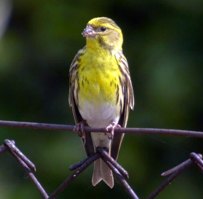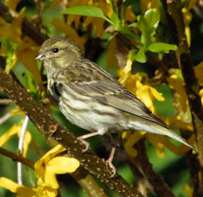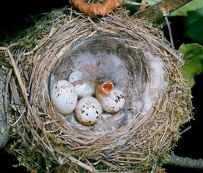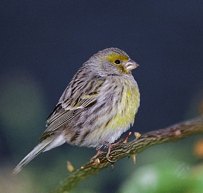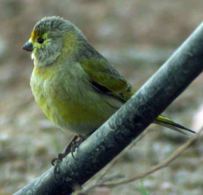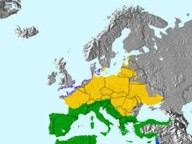|
||||||||||||||
Genera |
||||||||||||||
europ. Serin / Girlitz / Serinus
serinus Our serin
is closely related to wild canaries from the Canary Islands. He weighs
just 11 to 14 grams and is our smallest hardbill besides the common
siskin. As the picture shows, the sexes are differently colored. In
the wild he can be identified by his dainty structure, the the yellow
rump, and the tiny beak. So can he be differentiated from other birds,
especially by his song. At the end of March, the Serin leaves Southern Europe to return to his homeland. He is to be found in populated areas, especially in parks and gardens, where daily his delicate twittering song is heard. The male prefers to perch on thin twigs or telegraph cables. After the nesting time is finished, the serin gather for small flocks and feed on wild seed. In October they gather to make their flight to their winter home. The Serin currentsy inhabits almost all of Europe with the exception of England and Scandinavia. Length: 11,5 cm The female is not as fresh colored as the male an has on her head dark spots cluck: shrill „girlttt" song: chirps and twitter eggs: 14,4 to 17.6 x 11,0 to 12,7 mm Open woodland and cultivation, preferably with some conifers, is favoured for breeding. It builds its nest in a conifer or citrus tree, laying 3-5 eggs. The food is mainly seeds, and, in the breeding season, insects. This small serin is an active and often conspicuous bird.
|
The
population has been expanding northwards from the Mediterranean, however,
and reached Scandinavia and Britain during the 1970's. There were 20
pairs on Jersey and a few pairs in Devon but the expected colonisation
did not take place. In recent years only a few singing males have been
found in Britain and there is usually no further evidence of breeding. |
 |
